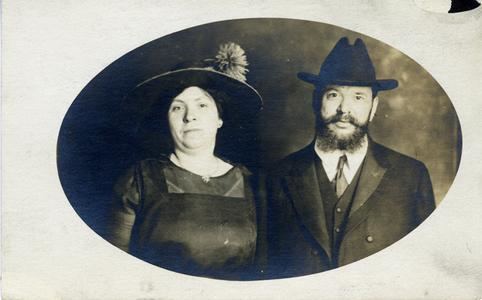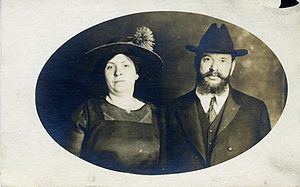Created Rabbi Yes Name Simon Glazer | Birth name Shimon Glazer | |
 | ||
Synagogue Chevra Kadisha Synagogue Nationality Lithuanian, Canadian, American Books The Jews in Iowa: A Complete History and Accurate Account of Their Religious, Social, Economical and Educational Progress in this State; a History of the Jews of Europe, North and South America in Modern Times, and a Brief History of Iowa | ||
Simon Glazer (or Shimon Glazer; 1876?-1938) was an Orthodox rabbi who flourished at the turn of the twentieth century. He was known for founding and leading two major organizations of American Orthodox rabbis.

Background

Born in Kaunas, Lithuania (known as Kovno at the time, or Kovne in Glazer's native Yiddish), his year of birth is not certain, and may have been either 1876 or 1878. He was president of the Council of Orthodox Rabbis of the United States and Canada, and co-founded the Agudath ha-Rabbanim, the Assembly of Hebrew Orthodox Rabbis of America.
Glazer's professional career was spent primarily in Montreal and New York City. He came to be the chief rabbi of the United Synagogues of Montreal and Quebec City before he moved to New York.
Glazer wrote a number of books, and was a supporter of Zionism. He campaigned for a Congressional resolution on the Jewish Palestine question in the 1920s. He also organized an effort, through the rabbinic organizations he led or participated in, to delay the institution of quotas on Jewish immigration to the United States. The effort was unsuccessful in that the legislation passed, but successful i that it delayed it long enough to allow thousands of Jews to come to the US. After the laws passed, he received authority from President Warren G. Harding to adopt five Romanian orphans, in order to provide them entry into the country.
Unusual for a European-trained rabbi of the period, he had a secular education, which aided him in his positions in North America, and allowed him to write books in English for an American public.
Glazer emigrated to Palestine to avoid Russian conscription, and then went to the United States in 1902. He held a position in Toledo, Ohio from that time until 1905.
In 1907, Glazer accepted a position in Montreal, for what was then known as the United Orthodox Congregations of Montreal, form which he expanded his role into Chief Rabbi of Montreal. He took interest in the poor immigrant population, who had previously not had any official supporters. In 1910, he founded the Montreal Hebrew Old People’s and Sheltering Home, which was both an old age home and an orphanage. He also helped start the local Yiddish language newspaper, Keneder Adler.
These undertakings created controversy with the establishment organizations, and their rabbi, Zvi Hirsch Cohen, who arranged for a newspaper article critical of Glazer. The rivalry escalated into the kashruth supervision of meat, and even became physical at one point. Eventually, Glazer had enough, and moved back to the United States in 1918, taking the rabbinate of Congregation Bikur Cholim of Seattle, Washington. In 1920, he took a position as rabbi in charge of a consortium of eight synagogues in Kansas City metropolitan area (Kansas City, Missouri and Kansas City, Kansas). He was more successful there in leading a citywide kehilla than he had been in Montreal.
In 1923, he moved to New York, where he spent the remainder of his career. His first post there was rabbi of Beth Medrash Hagadol of Harlem, followed by Congregation Beth-El of Brooklyn in 1927, and finally the Maimonides Synagogue of Manhattan from 1930 until his death in 1938 of heart disease.
Though Glazer was Orthodox, his writings and personal papers are in the collection of Hebrew Union College, the seminary of Reform Judaism. The collection contains correspondence, lectures, notes, writings, diaries, Hebrew and Yiddish manuscripts. It also has other records of his rabbinical career.
His 26 books include:
